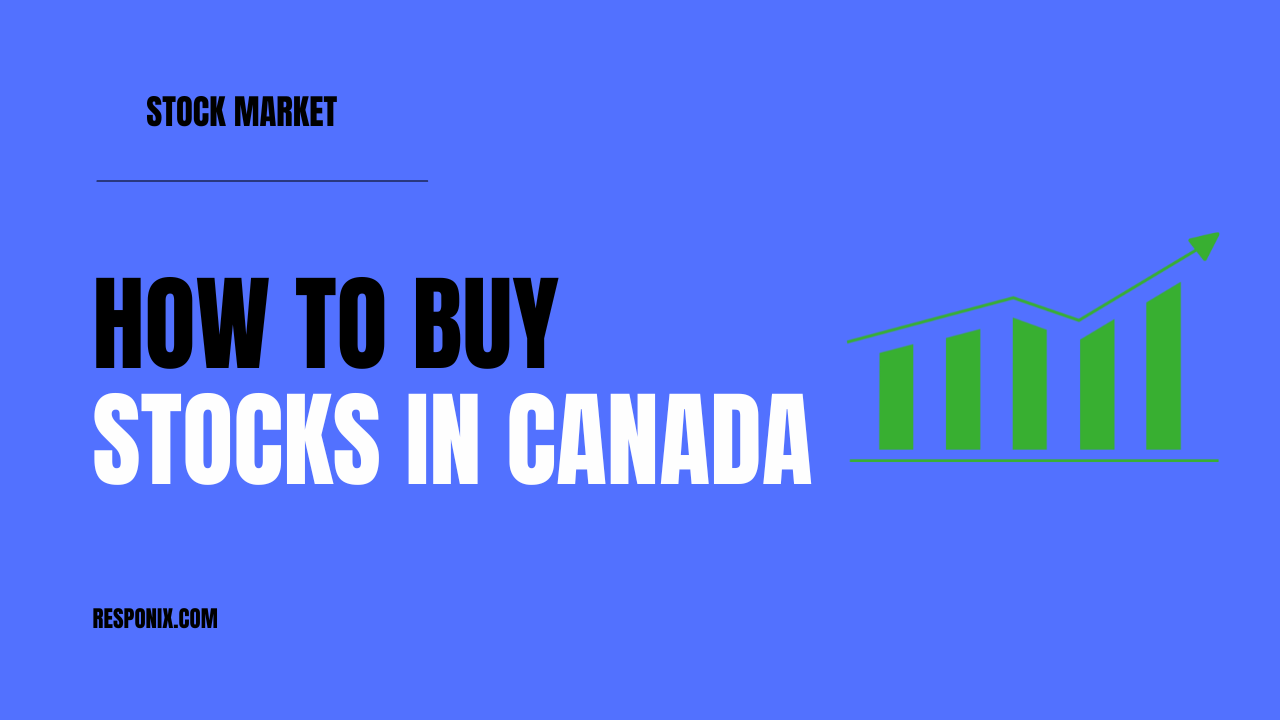Table of Contents
Why Learn How to Buy Stocks in Canada?
Let’s face it Canada’s stock market might not be Wall Street, but it’s a goldmine of opportunity for the smart investor. Whether you’re a newbie dreaming of financial freedom or someone looking to diversify your portfolio, learning how to buy stocks in Canada could be your game-changer.
This isn’t about “get-rich-quick” schemes. It’s about building wealth over time, the right way.
Understanding the Canadian Stock Market
What Is the Canadian Stock Market?
The Canadian stock market is mainly represented by the Toronto Stock Exchange (TSX), one of the largest stock exchanges in the world. It features big names like Royal Bank of Canada, Shopify, and Enbridge.
TSX vs. TSX Venture Exchange (TSXV)
- TSX: Where large-cap companies trade.
- TSXV: Home to smaller, emerging businesses and startups.
Understanding where your stock is listed helps determine the risk and potential reward.
Step-by-Step: How to Buy Stocks in Canada
Choose a Reliable Online Brokerage
This is where your journey begins. Pick a platform that aligns with your needs fees, features, research tools, and customer service all matter.
Top Canadian Online Brokers (Reputable Sources)
- Questrade – Best for low fees and ETFs.
- Wealthsimple Trade – Beginner-friendly, no-commission trading.
- Interactive Brokers – Great for advanced investors.
- TD Direct Investing – Solid bank-based platform.
Tip: Look for platforms that offer commission-free trading, solid mobile apps, and good research tools.
Open and Fund Your Brokerage Account
What You’ll Need:
- Government-issued ID (passport, driver’s license)
- SIN (Social Insurance Number)
- Canadian bank account
After registration, transfer funds from your bank to your new investment account.
Research and Choose Your Stocks
Start with stocks you understand household brands, utilities, or strong financials. Look at:
- Dividend Yield
- P/E Ratio
- Market Cap
- Historical Performance
Tools to Help:
- Morningstar Canada
- Yahoo Finance Canada
- Globe Investor
Key Types of Stocks in Canada
Blue Chip Stocks
Stable and trustworthy, like Royal Bank of Canada (RY) or Fortis Inc. (FTS).
Dividend Stocks
Pay you regularly, like Enbridge (ENB) or BCE Inc. (BCE).
Growth Stocks
Think of companies like Shopify (SHOP) high risk, high reward.
Should You Buy Canadian or U.S. Stocks?
You can buy both. But when buying U.S. stocks in Canada, watch out for:
- Exchange rate fees
- Withholding tax on dividends
Use RRSPs to avoid tax on U.S. dividends.
Best Accounts to Buy Stocks in Canada
TFSA (Tax-Free Savings Account)
- Tax-free gains
- Great for long-term growth
RRSP (Registered Retirement Savings Plan)
- Contributions are tax-deductible
- Great for retirement planning
Non-Registered Accounts
- Taxable
- More flexibility
How to Trade Stocks in Canada Like a Pro
Market Order vs. Limit Order
- Market Order: Buys at the current price.
- Limit Order: Buys only at the price you set.
Pro Tip: Use limit orders to control your entry point and avoid overpaying.
Use Dollar-Cost Averaging (DCA)
Invest a fixed amount regularly instead of all at once. It’s a smart way to reduce risk and stay disciplined.
Set Stop-Loss Orders
Protect your investment by selling if the price drops too much.
Fees You Should Know About
- Trading commissions (unless you use Wealthsimple Trade)
- Currency conversion fees
- Account maintenance fees
- ECN fees (for high-frequency traders)
Always read the fine print before choosing your platform.
Avoid These Rookie Mistakes
- Buying “hot tips” without research
- Ignoring diversification
- Trading too often
- Failing to track your performance
How to Analyze Stocks Before Buying
Fundamental Analysis
Look at revenue, profit margins, debt levels, and management.
Technical Analysis
Study charts, price patterns, and trading volumes.
Use platforms like TradingView or your broker’s built-in tools.
Can Foreigners Buy Stocks in Canada?
Yes, non-residents can open investment accounts in Canada, but you may face:
- Extra documentation
- Currency conversion issues
- Tax obligations
Always consult a tax advisor before investing internationally.
Is It Safe to Buy Stocks in Canada?
Yes, investing is safe when you follow the rules:
- Use regulated brokers
- Stick with well-known stocks or ETFs
- Don’t invest money you can’t afford to lose
The Canadian Investor Protection Fund (CIPF) covers up to $1 million in case your broker fails.
What Are the Best Times to Buy Stocks in Canada?
There’s no perfect time but historically:
- Buy during market dips
- Invest when others are fearful
- Avoid chasing hype
Timing isn’t everything. Time in the market beats timing the market.
Conclusion: Build Wealth, One Stock at a Time
Buying stocks in Canada isn’t rocket science. With the right tools, research, and discipline, anyone can become a confident investor. Stick to the basics choose a good broker, research your stocks, and invest regularly.
You don’t need to be rich or a finance expert. Start small, learn along the way, and watch your investments grow.
FAQs About How to Buy Stocks in Canada
1. What is the best online broker in Canada for beginners?
Wealthsimple Trade is excellent for beginners due to its commission-free trades and simple interface.
2. Can I buy U.S. stocks in Canada?
Yes, you can. But be mindful of currency conversion fees and U.S. withholding taxes on dividends.
3. Do I need a lot of money to start investing in stocks in Canada?
No. Some brokers let you start with as little as $1. Fractional shares make it even easier.
4. Is it better to invest in a TFSA or RRSP?
TFSA is great for tax-free growth and flexibility, while RRSP helps you save for retirement with tax-deductible contributions.
5. How do I avoid paying high fees when buying stocks in Canada?
Use commission-free platforms like Wealthsimple Trade and avoid frequent trading to cut down on costs.


